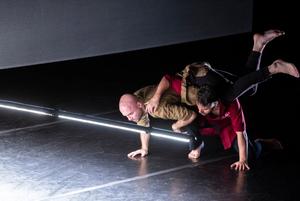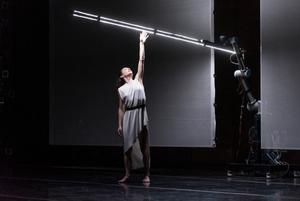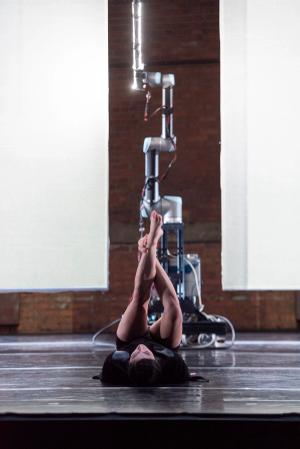Cultural production is not isolated from the contemporary world of divisive social media and political polarization. What to believe in this contradictory age of fake news, condoned hatred, and technological triumph? Even as humanity becomes more complex and varied, binaries nevertheless persist: us versus them, true versus false, him versus her, gay versus straight.
Late Nights on Air is a dance performance that explores the problem of binaries. A pair of large-scale projection scrims divide the stage—upstage is separated from downstage, stage left is split from stage right—physically cleaving the space along metaphorical lines. The projected live-action videos depict commonplace divisions such as suburban fences, architectural representations of power in national capitals, and varieties of electrical sockets and plugs. The two-channel projections document the persistence of similarities within opposites, demonstrating that binaries are not rooted in things themselves but are socially constructed.
A thin armature, cantilevered from a “collaborative” robot, produces a solid beam of light that divides the stage, performers, and audience into two halves—one side of the room is effectively pitted against the other. The robotic light bar shifts registers over the course of the performance. Starting out as a playful and helpful collaborator, it later becomes an obstacle, then a threat, and finally, a terror.




